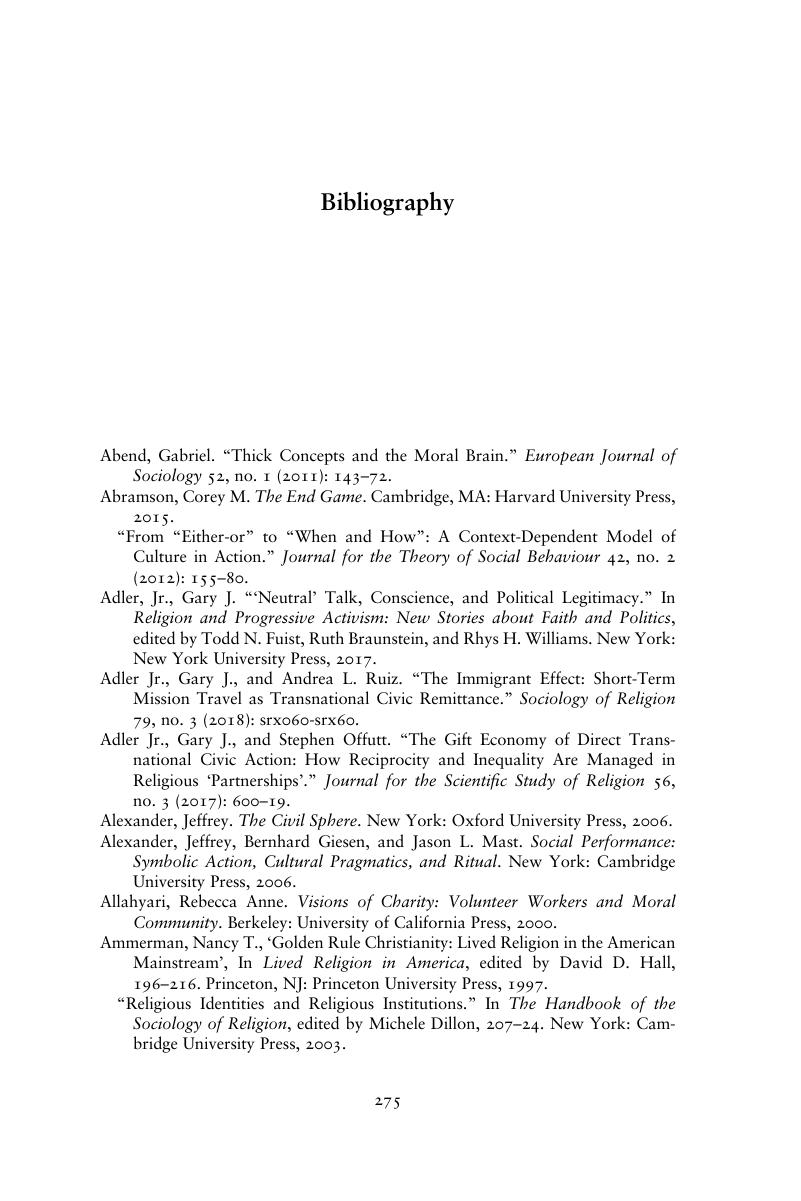Book contents
- Empathy Beyond US Borders
- Cambridge Studies in Social Theory, Religion, and Politics
- Empathy Beyond US Borders
- Copyright page
- Dedication
- Contents
- Figures
- Tables
- Preface: Are You Ready to Be Transformed?
- Acknowledgments
- 1 From Distance to Concern
- Part I Organizational Roots and Dilemmas
- Part II Activities, Emotions, and Empathy
- Part III Patterns of Experience and Transformation
- Methodological Appendix
- Bibliography
- Index
- Series page
- References
Bibliography
Published online by Cambridge University Press: 12 April 2019
- Empathy Beyond US Borders
- Cambridge Studies in Social Theory, Religion, and Politics
- Empathy Beyond US Borders
- Copyright page
- Dedication
- Contents
- Figures
- Tables
- Preface: Are You Ready to Be Transformed?
- Acknowledgments
- 1 From Distance to Concern
- Part I Organizational Roots and Dilemmas
- Part II Activities, Emotions, and Empathy
- Part III Patterns of Experience and Transformation
- Methodological Appendix
- Bibliography
- Index
- Series page
- References
Summary

- Type
- Chapter
- Information
- Empathy Beyond US BordersThe Challenges of Transnational Civic Engagement, pp. 275 - 294Publisher: Cambridge University PressPrint publication year: 2019



